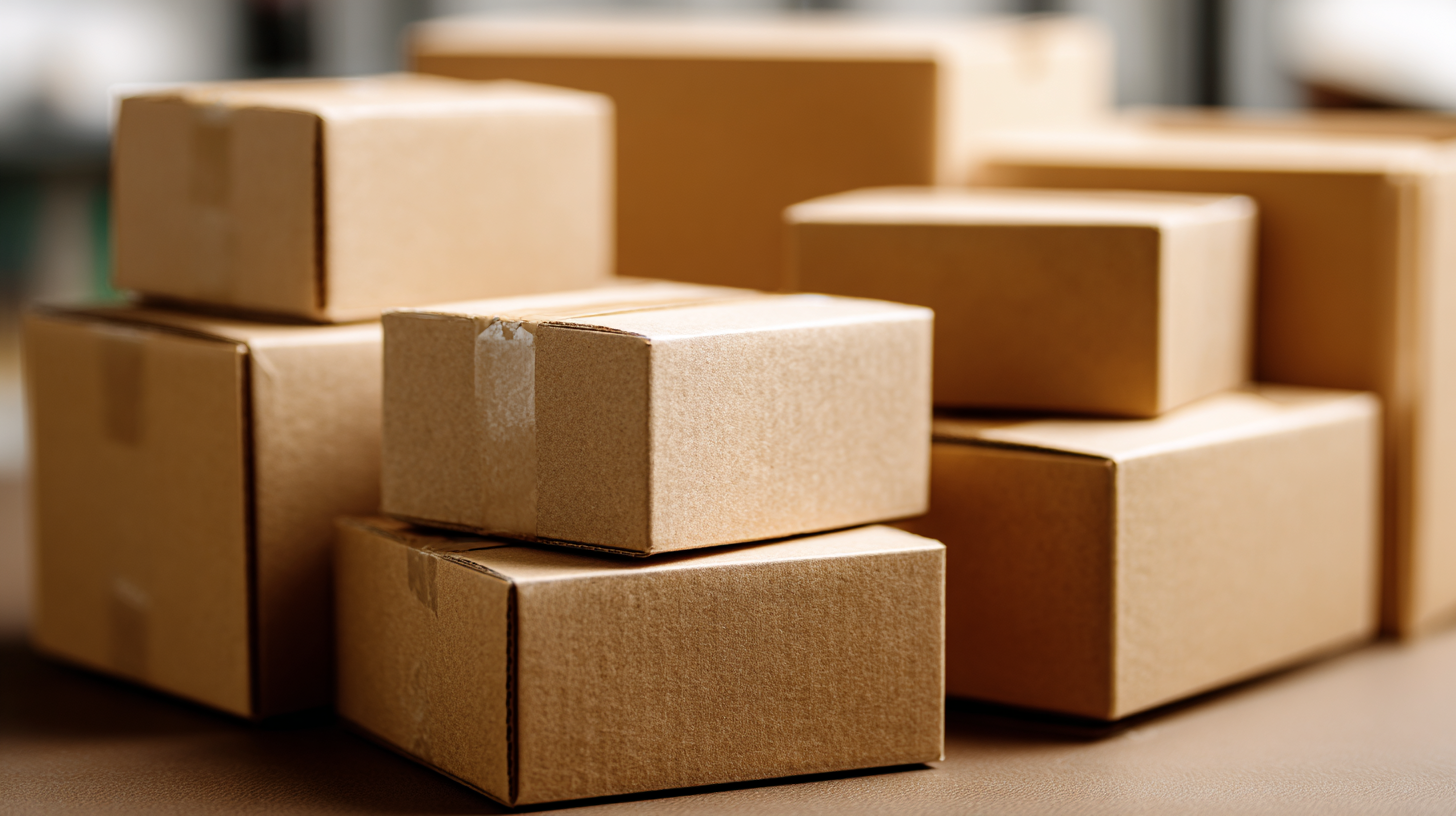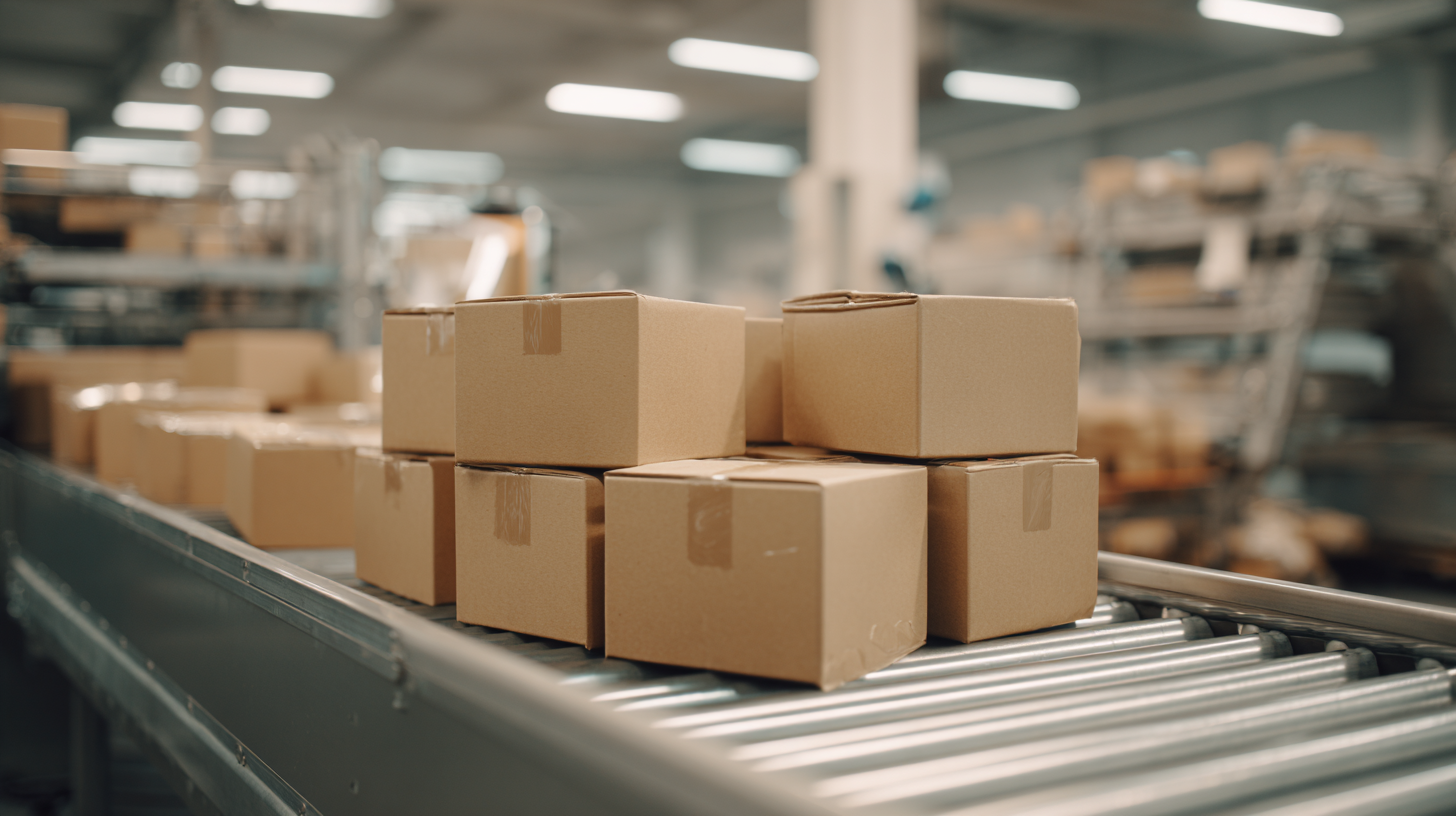Navigating Industry Production Standards for Unique Custom Logo Packaging
In the competitive landscape of brand differentiation, Custom Logo Packaging emerges as a critical factor for businesses aiming to enhance their market presence. According to a recent report by Smithers Pira, the global market for packaging is projected to reach $500 billion by 2024, with a significant portion driven by personalized packaging solutions. This shift towards customization not only fosters brand loyalty but also elevates customer experience, as 70% of consumers are more likely to choose a product with unique packaging.

However, navigating the intricate landscape of industry production standards presents challenges for companies looking to implement Custom Logo Packaging effectively. This blog explores the advantages of robust after-sales services and the potential repair costs associated with custom packaging, supported by real-world examples that illustrate the benefits of thoughtful and compliant packaging solutions.
Understanding the Importance of Industry Production Standards for Custom Packaging
Understanding industry production standards for custom packaging is pivotal for businesses aiming to create unique logo packaging that stands out while maintaining compliance and quality. According to a report by Smithers Pira, the global market for packaging is projected to reach $1 trillion by 2024, emphasizing the growing demand for innovative and customizable solutions. Adhering to established production standards not only ensures quality assurance but also enhances brand trust and consumer satisfaction.

Moreover, the importance of these standards extends beyond aesthetic appeal; they impact sustainability efforts as well. A survey conducted by the Paper and Plastic Packaging Environmental Council indicates that 66% of consumers prefer brands that demonstrate eco-friendly packaging practices. By aligning packaging production with industry standards that focus on sustainability, businesses can reduce their environmental footprint while appealing to the increasingly eco-conscious consumer base. Implementing these standards is not just a regulatory requirement but a strategic move that can differentiate a brand in a competitive marketplace.
Key Differences in Production Standards Across Different Industries
When it comes to custom logo packaging, understanding the production standards across various industries is crucial for brand success. Different sectors, from food and beverage to electronics, each have their own set of regulations and requirements that dictate how packaging must be produced and presented. For example, the food industry is heavily governed by safety and hygiene standards, necessitating the use of materials that can withstand contamination while maintaining freshness. This often involves certifications that ensure the packaging is food-safe, which can significantly influence design choices and production processes.
Conversely, industries like cosmetics or electronics prioritize aesthetics and functionality in their packaging standards. In these cases, the focus shifts toward creating visually appealing designs that convey brand identity while also ensuring that the packaging protects the product. Such variations not only affect the choice of materials but also the technologies used in production. For instance, while eco-friendly packaging might be a growing trend across many sectors, the specific certifications required to meet sustainability claims can differ significantly from one industry to another, adding another layer of complexity to the production process. Understanding these distinctions is essential for brands looking to tailor their packaging solutions effectively within their respective markets.
Navigating Industry Production Standards for Unique Custom Logo Packaging - Key Differences in Production Standards Across Different Industries
| Industry | Primary Production Standards | Sustainability Requirements | Customization Flexibility | Lead Time |
|---|---|---|---|---|
| Cosmetics | ISO 22716 | Recyclable materials preferred | High customization available | 4-6 weeks |
| Food & Beverage | FDA compliance, HACCP | Biodegradable options required | Limited customization | 3-5 weeks |
| Electronics | IEC standards, RoHS compliance | E-waste management programs | Moderate customization options | 6-8 weeks |
| Apparel | ASTM standards | Organic materials encouraged | High customization flexibility | 4-6 weeks |
How to Ensure Compliance with Packaging Regulations for Custom Logos
In recent developments, the acceleration of Extended Producer Responsibility (EPR) packaging regulations in the U.S. has brought forth significant changes for businesses, especially those in eCommerce. With seven states already implementing these packaging regulations akin to the European Union's standards, companies must ensure that their custom logo packaging is compliant. This is essential not only for adherence to legal requirements but also for building consumer trust in an increasingly eco-conscious market.

To navigate these regulations effectively, businesses need to focus on understanding the specific requirements related to packaging materials, labeling, and waste management. Engaging in compliance consultations and staying updated with industry news is crucial as regulations evolve. Additionally, as tariffs see a substantial increase, especially on products imported from certain regions, businesses must also adapt their strategies for packaging and distribution to mitigate costs and maintain competitiveness. Custom logo packaging should not only reflect brand identity but also align with compliance standards to promote sustainability and accountability in the market.
Evaluating Material Quality: Choosing the Right Options for Custom Logo Packaging
When it comes to custom logo packaging, the quality of materials plays a pivotal role in the perception of your brand. Customers not only seek aesthetic appeal but also durability and functionality. Choosing the right materials is essential to ensure that your packaging withstands transportation while also making a strong statement about your brand’s values. For instance, eco-friendly materials are increasingly becoming popular, aligning with consumer preferences for sustainability. Brands that invest in quality materials can significantly impact their market presence, as consumers are more likely to be drawn to packaging that feels premium and aligns with their values.
In evaluating material quality, it’s essential to consider several factors, including thickness, finish, and printability. For custom logo packaging, cardboard and paper materials offer great versatility and can be engineered to enhance visual appeal. Meanwhile, plastics may serve well for products requiring moisture resistance. It is crucial to test samples and assess how well they hold up against wear and tear in real-world scenarios. By prioritizing material quality, businesses can create an engaging and reliable packaging solution that not only protects their products but also elevates their brand image in a competitive marketplace.
Best Practices for Collaborating with Manufacturers on Unique Packaging Solutions
In today's competitive market, collaborating with manufacturers to create unique custom logo packaging can significantly impact brand identity and consumer perception. According to a Smithers Pira report, 70% of consumers believe that packaging design influences their purchasing decisions. This statistic underscores the importance of investing time and resources into developing innovative packaging solutions that not only stand out on the shelf but also reflect the values of your brand.
When engaging manufacturers, it's crucial to establish clear communication regarding your vision and requirements. Best practices suggest providing comprehensive design briefs that include brand guidelines, target audience insights, and desired materials. A study by McKinsey highlights that companies with a strong design brief see a 35% decrease in development time, demonstrating the benefits of a well-prepared collaboration. Furthermore, manufacturers can offer insights into current production standards and eco-friendly materials that align with consumer demand for sustainability, as reported by the Environmental Protection Agency, where 50% of consumers prefer brands that use environmentally friendly packaging solutions. Effective collaboration not only leads to unique packaging but also supports a sustainable approach that resonates with consumers.